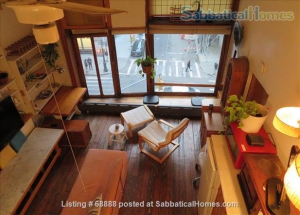Coming to the United States as a visiting scholar requires determination and the right connections. While in New York, SabbaticalHomes.com founder Nadege Conger spoke to Suzann-Viola Renninger, a scholar from Universität Zürich who is currently on sabbatical leave in New York at Columbia University.
What is a Visiting Scholar?
Like Suzann-Viola Renninger, a visiting scholar is any academic who is temporarily relocating to another university in another city, many times in another country, to focus on research, writing a book or another collaboration with other academics. Visiting Scholars are funded in a variety of ways: some have earned the distinction of being part of the Fulbright Visiting Scholar program, some have been awarded other prestigious research or travel grants and some may be self-funding their sabbatical or project. What all international students and visiting scholars have in common is the necessity for a visiting scholar visa. Read on to learn how this process works for an international visiting scholar to come to the United States.
Related: Funding Student Travel – Grants, Scholarships & Fellowships
Start with Finding a Faculty Sponsor
The first step for a prospective visiting scholar who is interested in taking a sabbatical in the U.S. is to connect with a scholar from the U.S. who is open to becoming your Faculty Sponsor.
The sponsor is most likely a fellow academic who works within your specialty or has some expertise connected to your current project. Maybe it’s a professor or scholar who has visited your university working on their own project or maybe it’s another academic that you’ve shared information with on a previous project.

For Suzann-Viola, she had met a distinguished American Philosophy professor from Columbia while he was at Universität Zürich giving a series of talks. After his visit, their conversations evolved into working on a project together and he became her sponsor, allowing her to start the process to become a visiting scholar at Columbia University.
The faculty sponsor will need to be part of a Designated Sponsor Organization because that organization will head up the next part of the process. These program sponsors are in charge of selecting participants and providing support for the duration of the visitors’ participation in the program. Many colleges and universities are designated sponsor organizations so that they can actively assist visiting international scholars, creating the exchange of research and ideas that academia thrives upon!
Related: 10 Reasons to take a Sabbatical
Obtaining a Certificate of Eligibility (DS-2019) for Exchange Visitor Status
The certificate of eligibility or Form DS-2019 is the next step since it is a pre-requisite to obtaining a scholar visa. The Designated Sponsor is authorized to issue this form, and it must have detailed information including details of the project, start and end dates and any associated costs of the program.

Many universities also have detailed information about this process on their website if they are accustomed to having international scholars visit and work there.
Chances are, if you’ve already had conversations with a faculty sponsor, the university they are associated with will be the Designated Sponsor and will be instrumental in issuing your Form DS-2019. Having this form gets you one step closer to working on the project you are passionate about!
(Note: Links to learning more about these forms and resources are at the bottom of the article.)
The Last Mile: The J-1 Scholar Visa
Once you have the Designated Sponsor and the DS-2019 form in place, the final step in this process is applying for a J-1 Scholar Visa. This involves a fair amount of paperwork, waiting and fees before you are invited for an in-person interview; only after the interview will you be issued the J-1 Scholar Visa.
For Suzann-Viola, she was excited and relieved to take her trip to the U.S. Embassy in Bern, Switzerland for her interview. The official looked into her face, stamped the document and said: Approved! The visa is glued firmly on one of her passport’s pages.
On average, the whole process takes three months. As Suzann-Viola can attest, there is a lot of paperwork, a fair amount of fees, and a large amount of patience involved in becoming a visiting scholar – but the rewards of the experience are enormous, both professionally and personally.
Related: Member Spotlight: Suzann-Viola Renninger, Columbia University Visiting Scholar
Visiting Scholars Can Find Off-Campus Housing at SabbaticalHomes.com
 Congratulations! After you have done all the work to get your Visiting Scholar Visa, SabbaticalHomes.com will be your resource for finding a home rental, home exchange, home-sharing or housesitting arrangement that fits you perfectly!
Congratulations! After you have done all the work to get your Visiting Scholar Visa, SabbaticalHomes.com will be your resource for finding a home rental, home exchange, home-sharing or housesitting arrangement that fits you perfectly!
You can also create a tenant listing to find someone you trust to stay in your home while you are taking a sabbatical.
Related: 5 Simple Steps to Get Started with Sabbatical Homes
Resources for Obtaining a Visiting Scholar Visa
For an overview of the U.S. Department of State Exchange Visitor Program, you can visit their website. There are details on every step of the process, including who is eligible, what type of program to apply for, how to apply, and the associated fees.
If you don’t already have a sponsor, the U.S. Department of State Exchange Visitor Program also has a Designated Sponsor Search feature that can be a great place to get started.
Many universities have robust resources on their websites for you to start the process of finding a Faculty Sponsor at a Designated Sponsor Organization. Columbia University, for example, provides invaluable information at the International Students and Scholars Office of Columbia.
Related: Travel Resources for Professors
Let us know what you think! Connect with us on Twitter, LinkedIn, Facebook, Instagram, YouTube and Pinterest.


